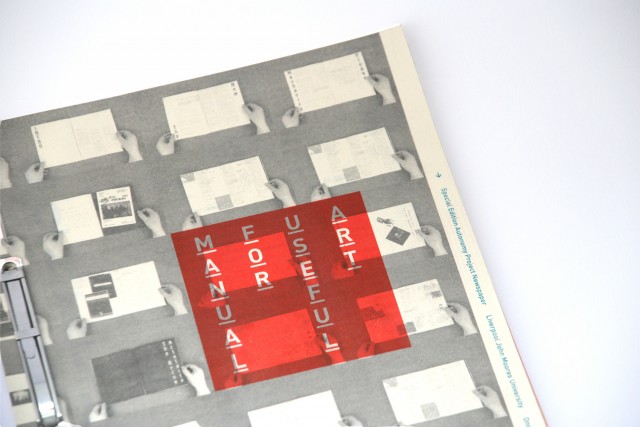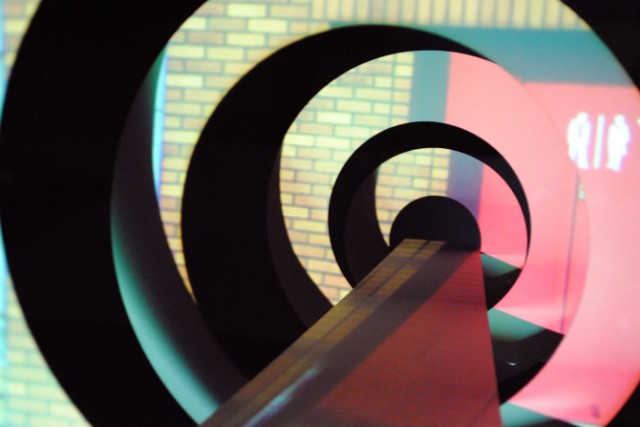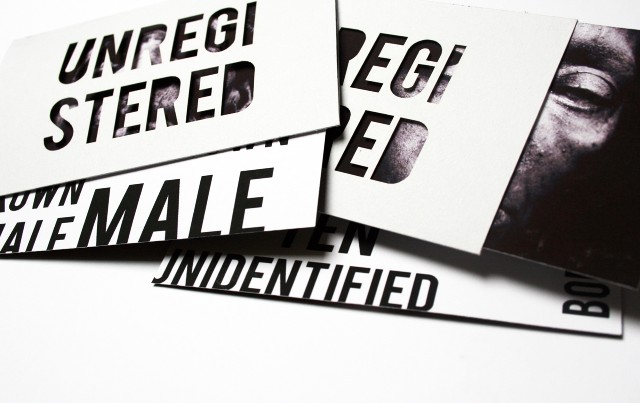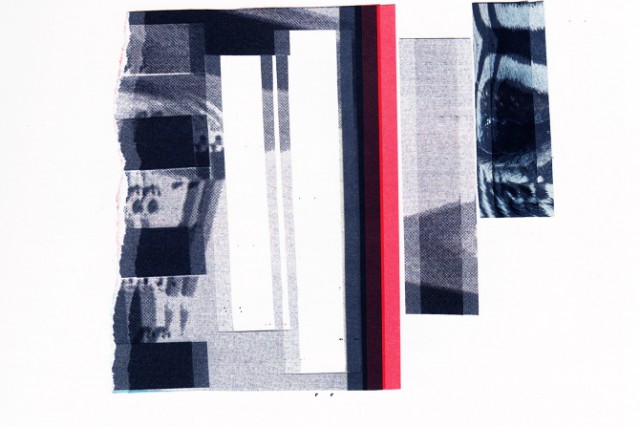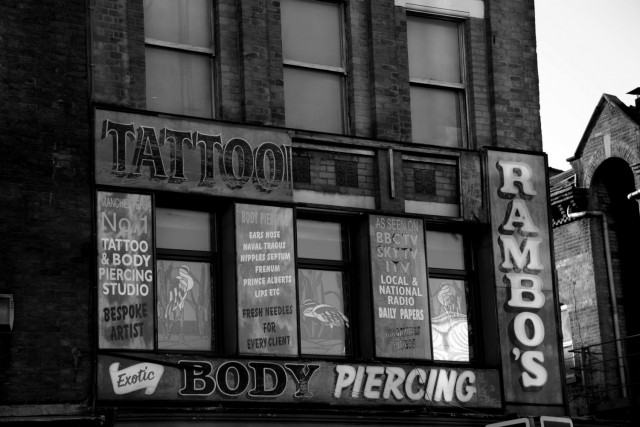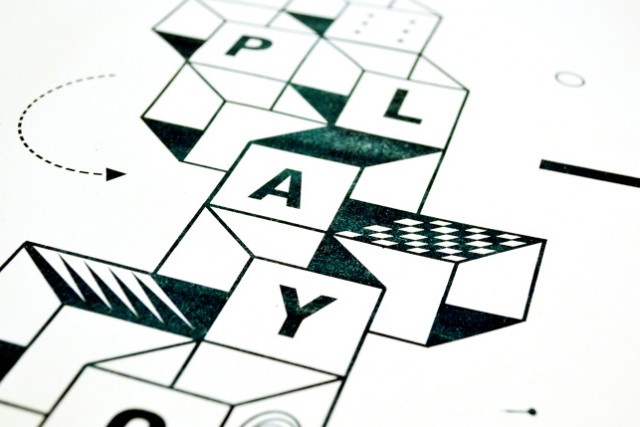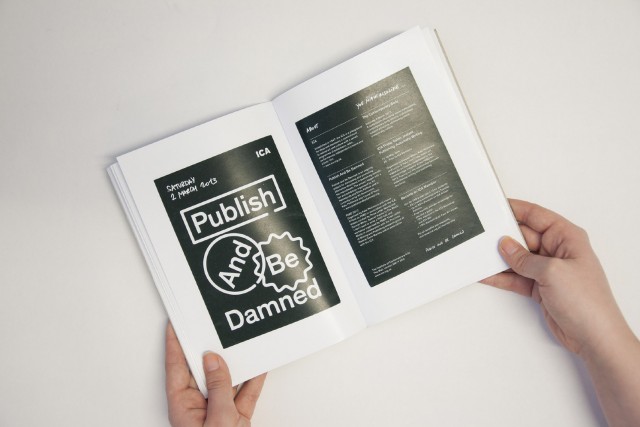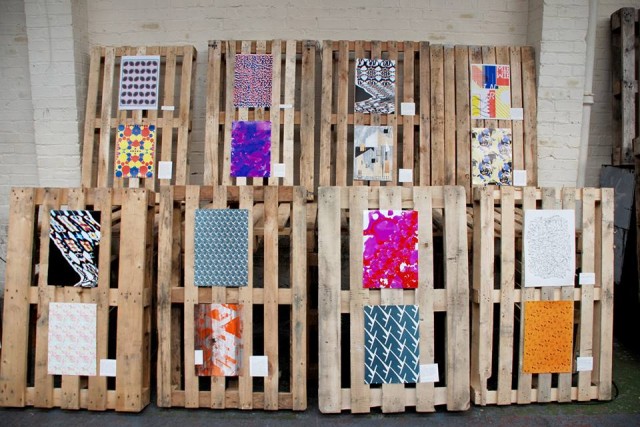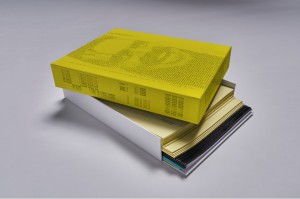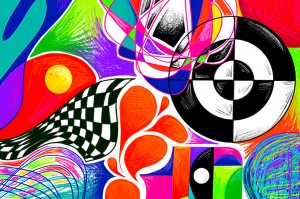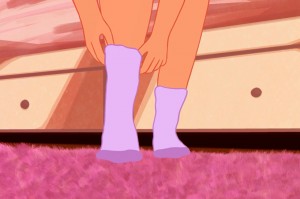Artists Of The Month: Emily Briselden-Waters & Holly Gleave (Inprint)
“Ignore any doubts and get on with it”: our new Artists of the Month and print fair pioneers share pearls of wisdom on doing what they love in parallel to making a living…
Emily Briselden-Waters and Holly Gleave are young freelance designers with a commitment to supporting their peers. Starting up Inprint Liverpool just before graduating in 2013, in a response to a lack of places to sell their work, the fair has now travelled around the UK and Europe and is returning to Liverpool this Sunday.
Outside of Inprint, Briselden-Waters and Gleave make work that ranges from art installations to brand identity. Briselden-Waters currently works as a designer at the National Football Museum, Manchester; you can see her work in NFM – Out of Play – Technology and Football (from 19 June-19 July 2015) before she leaves to embark on an Information Experience Design MA at the Royal College of Art. Gleave is a commercial designer at High Speed Two (HS2), London; her personal projects include Disposable Diary and The Manual For Useful Art, stocked at Whitechapel Gallery’s bookshop.
We caught up with the designers to discuss their friendship and subsequent business partnership, how Inprint has evolved, and the best advice they’ve been given so far…
The Double Negative: Hi guys! How did you both get started in design? Did you always want to be illustrators/graphic designers?
Emily Briselden-Waters: Being shy (when I was younger) and also dyslexic, I always found visual communication a lot easier than verbal or written. I feel I come at design with more of a fine art look – I wouldn’t necessarily call myself a graphic designer or illustrator — I think I try and blur the lines between exhibition design/ curation/ graphic design/ art-direction. The whole experience is what matters to me and especially in the current creative climate, I feel you have to do a bit of everything!
Holly Gleave: I think since studying art and design at school I was always interested in more creative subjects. It sounds pretty clichéd but I genuinely can’t imagine doing anything else. We (me and Emily) actually met at Leeds College of Art when we were both there doing a foundation course and lived in the flat across the hall from each other. We weren’t so driven back then and used to skive off to watch Jeremy Kyle and eat potato waffles! After Leeds I moved to Liverpool and Emily moved to Manchester for university so we stayed in touch.
Inprint is three years old this year, and was set up as a platform for a blossoming print scene in Liverpool. I am interested in what your first impressions of the scene were in 2012 and how you think it has evolved now? Especially as Inprint has grown?
HG: We decided to set up Inprint in the first place because we felt there was a gap for this kind of networking and social event as much as an opportunity for people to sell their work… I think because of Inprint I am much more aware of how many creatives/collectives/studios there actually are in the city. I have noticed with our upcoming event that there are more and more new people coming forwards to sell their work… One of the great things about the events is that we can use ourselves as a platform for people from all different backgrounds whether they are students, or established designers and illustrators.
EBW: The way in which Liverpool has welcomed us and let us grow is amazing! Over the last three years we have held events in some amazing spaces and collaborated with partners like Tate, The Bluecoat and also an exchange programme with Anhault University. Getting to hold our event in an original Bauhaus building in Dessau was a pretty fantastic feeling, and the fact that the opportunity came as a result of Inprint was really special.
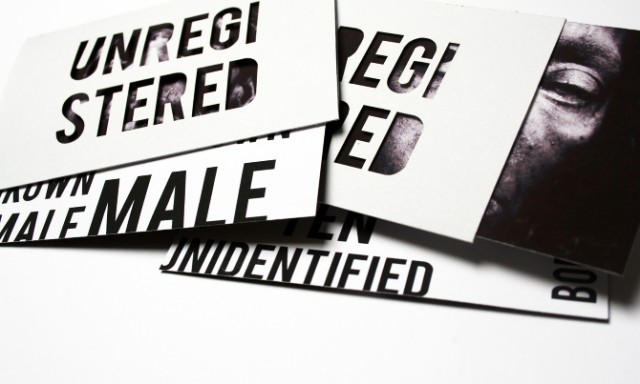
Can you tell us about any new artists and designers you’re excited to feature in Inprint 2015?
HG: The group of sellers we have for Inprint 2015 is by far the largest and most diverse we have ever had — there really is a serious amount of talented people joining us! One of the people who stuck out for me was Dan Howden: he uses linoprint to create really detailed scenes. His use of colour and composition are really special – I particularly like his selection of Cape Cod prints.
I am also especially excited to see what the guys at Funf studio will be bringing with them. They are a collective made up of illustrators, designers, printmakers who are all super talented and creating a lot of exciting work.
EBW: Also Hot Bed Press from Manchester and Chella Quint from New York/Sheffield. They are both great professionals in the print world and we are very excited to have them on board. We have also had a lot of support from G. F. Smith for this event; we would like to thank Jane Crowther for all the help (and paper)!
How hard is it to get the balance right as a professional designer between commercial and creative projects?
HG: Well firstly, I don’t think my work at HS2 and Inprint could be more different, although saying that they do both influence each other in their own way. After graduating, I really didn’t see myself at such a large organisation and especially not such a controversial government project, but I have learnt so much in my time at HS2 and it has been really eye-opening. I think one of the reasons I have personally always been keen to continue Inprint is that it works so well as a creative outlet, especially in comparison to some of the more corporate design work I create.
As Emily and I are essentially the creative directors of Inprint, it means we can have complete creative freedom on the work we put out, whereas at HS2 the brand is a bit less flexible! It is hard at times to keep a balance, especially in the build up to events; it means working on Inprint before and after my normal working hours which at times can be quite hard work… [Inprint] gives you chance to pursue interests that you might not get to in a more commercial workplace and I think overall this makes you more well-rounded as a designer.
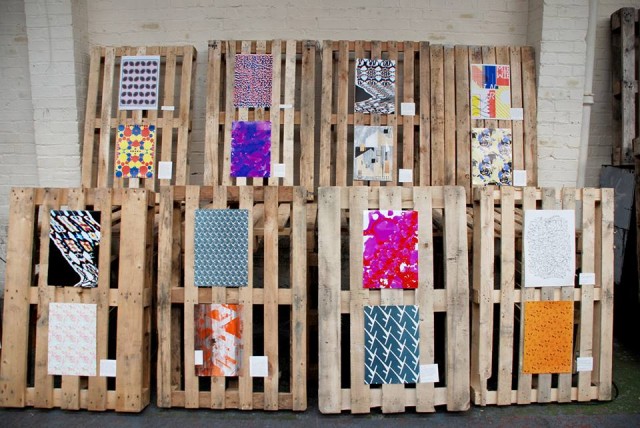
Are there any artists/designers that you look up to and learn from?
HG: There are a lot of cool agencies and designers creating amazing work, but I think one person who I especially admire would be Gary McGarvey, aka Horse. When we started our events at The Shipping Forecast we were using the space upstairs, which at the time was also Gary’s Percy Gullivers Print Shop. I don’t know what he was thinking letting us come and take over the space, but he was so helpful to us especially for the first few events when we were still finding our feet. His work ethic is off the charts and the quality of work he produces is always to such an amazing standard — I think he could easily be a great influence to many of our current sellers and most of the creatives in Liverpool!
EBW: Morag Myerscough is up there as one of my favourite designers. I love the scale and colour of her work. Also Manchester-based Soup Collective, who I have been lucky enough to work with on various projects, do some incredible film/ projection work within museums and galleries.
What is currently on your radar in terms of influences?
EBW: I have always found the link between medicine and design very interesting – and more recently mental health and experience design. The challenge of how to visualise something you can’t see. We are also both avid feminists and are really excited to have Queen of the Track and Chella Quint at this event. I have recently co-curated an exhibition on the male muse in Manchester that was received well; there is a lot of room to push this further… It gives feminism a different and fresh voice, allowing it to propel further and reach a wider audience.
What’s the best piece of design advice you’ve had so far — especially for setting up your own business?
HG: I think one of the best pieces of advice I received was from Jim Quail, one of our visiting lecturers at university and who worked with me in my final year when I was working on ‘the print project’. At the beginning, I doubted whether or not to produce a video documentary because I had no video skills and no video equipment. His advice was to: ‘Just do it anyway’; to ignore any doubts and get on with it. I think this is great, because even though it is quite a simple idea, it is often so easy to get bogged down in questioning what could go wrong and what if you fail. With Inprint we had no idea what we were doing and didn’t know that it was going to work or go anywhere, but we just did it anyway.
EBW: Take every opportunity – my tutor Liz at university said this to me when I graduated – and this is what I have aimed to do! I feel you don’t know if you don’t like something until you have tried it – and some strange pairings can work! I would never in a million years thought I would be working at the Football Museum.
Laura Robertson
Catch Inprint Print Fair this Sunday 31 May at Camp and Furnace, Liverpool, 12-5pm, free entry — come say hi to The Double Negative and G. F. Smith at our stall!
See more from Emily Briselden-Waters and Holly Gleave

